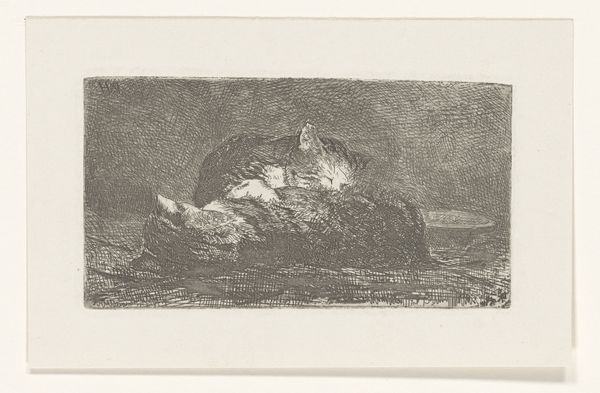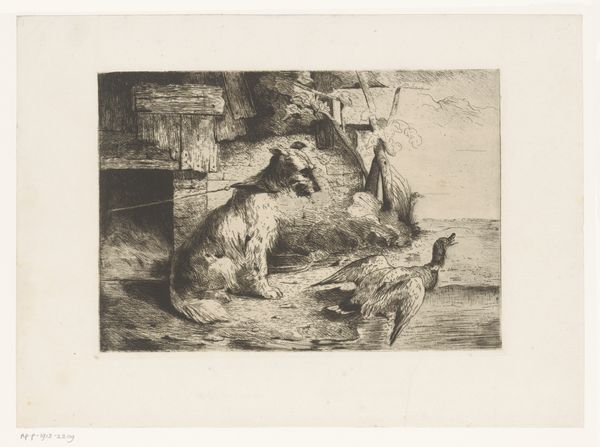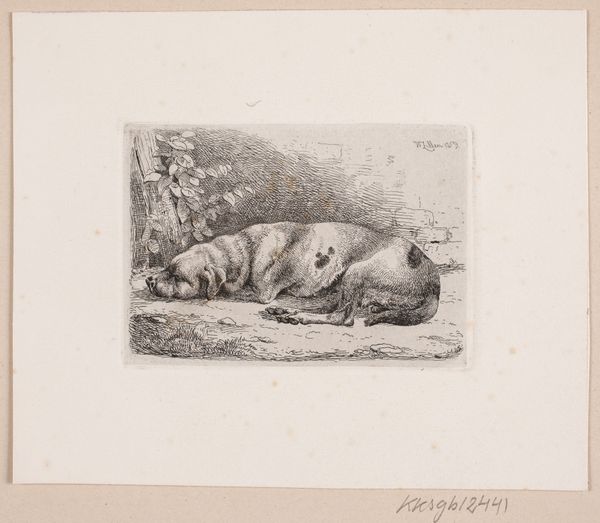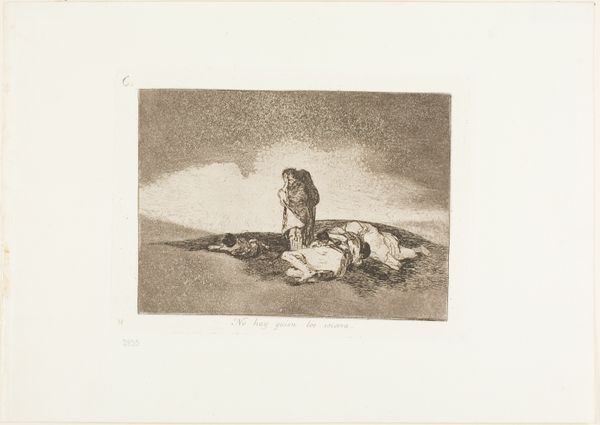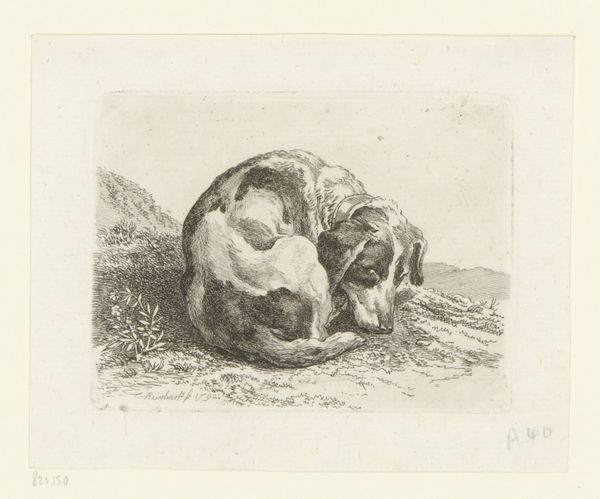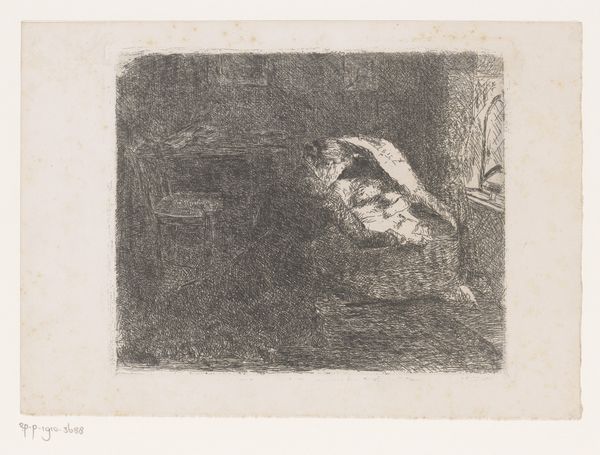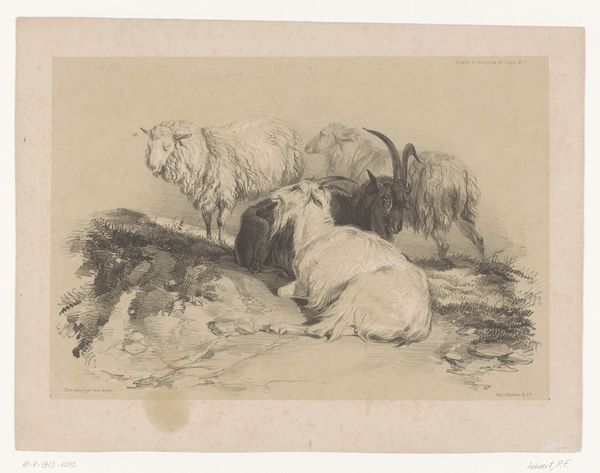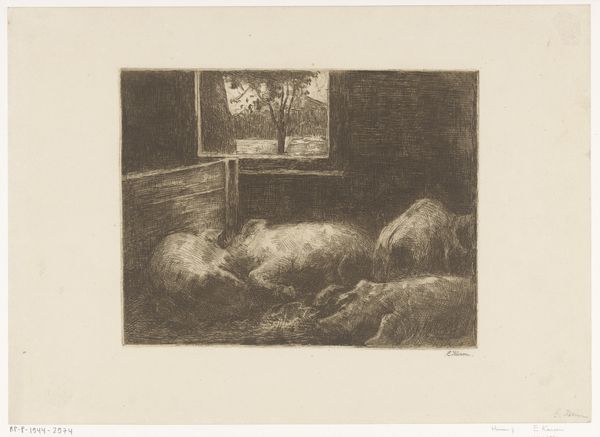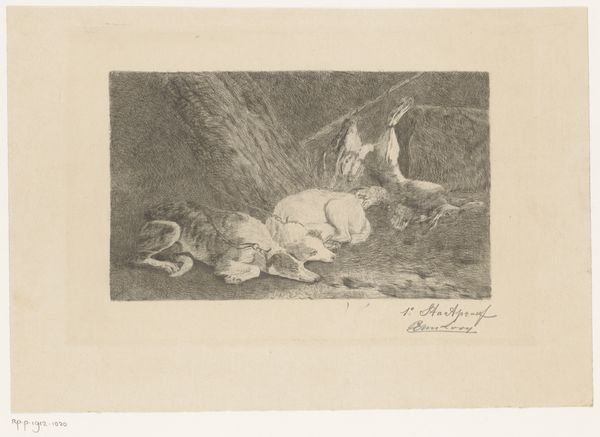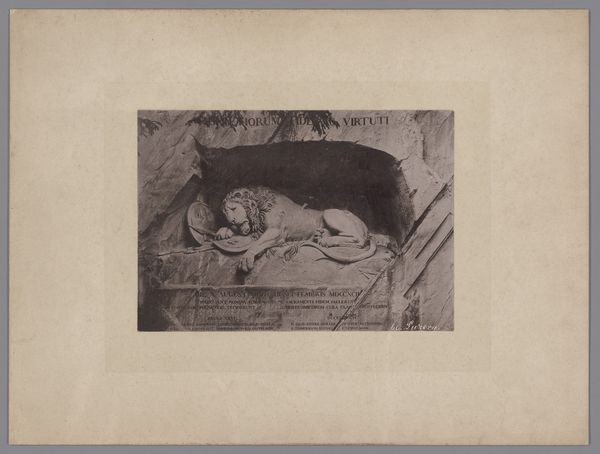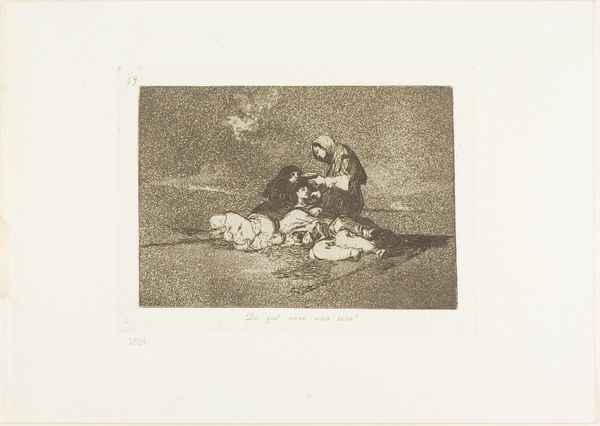
drawing, print, etching, paper
#
drawing
# print
#
etching
#
paper
#
france
#
genre-painting
#
realism
Dimensions: 132 × 142 mm (image); 169 × 275 mm (plate); 303 × 433 mm (sheet)
Copyright: Public Domain
Curator: Let's talk about Charles Jacque's "Four Sleeping Pigs," an etching dating back to 1850, here at the Art Institute of Chicago. Editor: The immediate feeling is, surprisingly, tenderness. They're so huddled together. It makes you think about the labor and reality for those beings, even though it's kind of sentimental, there is still a dark reality around what this work can possibly hint at. Curator: Right. Jacque's focus often centered around rural life. Etchings like this, produced on paper, became more accessible to a broader public, speaking to a growing interest in Realism, even for subjects as humble as livestock. Editor: The realism really hits you. It's not idealized. They are just, well, pigs. What's interesting is the technique; it's scratchy, almost hurried, yet the feeling is one of quiet stillness. They almost seem exhausted. Curator: I agree. The texture created through the etching process reflects their unkempt surroundings. The very materiality—paper and ink—speaks to a culture consuming images of the working class and animal labor, even, or maybe especially, in their moments of repose. And let’s not overlook the presence of that empty bucket and the worn-out brush, elements reflecting their role within that system of animal labor. Editor: Exactly. It's interesting, how seemingly simple subjects can hold so much. It also becomes a meditation on value: Who gets to rest? What labor goes unnoticed, and which animals we ignore because they are just background pieces for larger systems and benefits? Curator: It is a layered work. It speaks volumes about the economies and values that undergirded not just the art world, but all of French society at mid-century. Editor: It seems like such a quiet image, and the simplicity brings so many uncomfortable ideas about class, value and the conditions for life within capitalism in the mid 19th-century! I am thankful it also humanizes these animals for me as well, just slightly... Curator: Indeed, a seemingly straightforward genre scene becomes quite loaded upon closer inspection. It reminds us of the power of art to both reflect and critique the world around it.
Comments
No comments
Be the first to comment and join the conversation on the ultimate creative platform.

